Bulgaria has a unique geographical situation in the far south-east corner of Europe on the Balkan Peninsula. The country’s area is rather small – only 111 000 sq km – but it is located at the meeting point of three bio-geographic regions: the mid-European forest, the Eurasian steppe and the Mediterranean. This location, together with the huge variety of landscapes, ensures a rich biodiversity. Eco tourism has never been so variable and exciting.
It is hard to describe the culture, history and people of Bulgaria. Traditional life is best preserved in the numerous villages nestling in the mountains and plains. In many regions, people still work the land manually and their produce is organic and delicious. Traditional handicrafts are still transmitted from generation to generation and houses from the 18th and 19th century, built from wood and stone are typical. Village life is tranquil, colourful and rich in emotions.
Regions for rural and eco tourism
Sofia Echo Com, 22.05.2006
Rural and eco tourism have big potential in small Bulgaria. The country can be divided into seven regions for rural and ecotourism, each with its own character and personal touch.
The north-western region is a little-known destination. The western parts of the Balkan Range are the highest in this region.
The Balkan Range, also called Stara Planina, is the longest in the country. It spreads from east to west and divides Bulgaria into two parts – north and south.
Limestone rock formations and the Ledenika Cave are found in the Vrachanski Balkan Nature Park. Bats and birds of prey – falcons, eagles and vultures – live in the caves. There are ecotrails in the area, which lead to little-known, amazing spots. The park’s information centre is situated in the town of Vratsa.
Prehistoric paintings are preserved in the Magura Cave, the carpets from the village of Chiprovtsi have international significance, and local handicrafts can be seen in the village of Pavolche, with its new centre for handicrafts. You can taste the unique Bulgarian Gamza red wine from Novo Selo and the sparkling wine from Magura.
Several villages and small towns provide accommodation in comfortable guest houses and family hotels.
The north-central region is situated in the geographic centre of the country. The region is very diverse as it starts from the Danube River, spreads to the sub-Balkan territories and reaches the high central parts of the Balkan Range.
The central parts of the Balkan Range make up the Central Balkan National Park, a place where new species are often discovered. The park contains the richest ecosystems in Bulgaria with well over 1860 plant species, 90 of which are rare or endangered. Most ecotrails in the country are found here.
The canyon at the Rusenski Lom Nature Park is magical. There are more than 820 plant and 200 bird species, including the golden eagle, black stork and owl.
Numerous villages have preserved traces of their revival period charm and romantic spirit. Arbanassi and Bozhentsi are two villages with architecture from the Bulgarian pre-national revival period. The Ivanovo Rock Monastery is under UNESCO protection. The unique open-air Etara Ethnographic Museum is near Gabrovo.
The region is famous for its wineries. The cellars in Suhindol, Lyaskovets and Rousse offer a wide range of red wines.
Rural tourism is well developed and offered in packages with other activities such as horseback riding, hiking, craft workshops, and wine and brandy tasting. The most popular destinations for rural tourism in this region include Arbanassi, Bozhentsi, Vishovgrad, Gorno Trape, Elena, Zgalevo, Koshov, Lovech, Beli Osam, Cherni Osam and Iamna.
The north-eastern region combines the vast north-eastern plains with the Danube River and north Black Sea coast. The botanical garden in Balchik is one of the highlights in this region.
The extensive plains at Dobrudja have been inhabited since ancient times. The Thracian Tomb at Sveshtari is on the UNESCO list. The Yailata Archaeological Reserve is a top spot for botanical observation. Equally impressive is the Madara Horseman rock relief. The old royal Euxinograd palace is famous for its wine and brandy.
The south-eastern region is probably the most diverse. It spans from the southern Black Sea coast, with its wetlands and bird life, to the Strandja Mountains, and north to the far-eastern parts of the Balkan Range and the vast Thracian plain.
On the Black Sea coast one can witness one of the most impressive ornithological sights in Europe: every year, hundreds of thousands of birds migrate in all directions via Bulgaria.
Exceptional diversity of flora and fauna is found in the Strandja Nature Park. It has five reserves and is the largest protected territory in Bulgaria. Almost half of all the plant species in Bulgaria can be found in the park.
There is another nature park in the region called Sinite Kamuni – the Blue Rocks. It is a place of great biodiversity, with nearly 50 species of native plants. There are more than 160 bird species. Century-old beech forests grow amid vertical limestone rock formations.
The seacoast shelters several reserves with biodiversity unique to Bulgaria. The southern part of the region, where the Strandja Mountains reach the Black Sea, keeps alive the pagan tradition of fire dancing at the beginning of June.
Some accommodation facilities enable visitors to immerse themselves in the Revival atmosphere without sacrificing comfort. In the villages of Brushlian, Vozenkovo, Evrenozovo, Stoilovo, Medven, Ichera and Zheravna rural tourism is offered in combination with mountain biking, walking and nature watching.
The south-central region Is situated in the central parts of southern Bulgaria. It covers the vast Thracian plain, the low parts of the central Balkan Range and the valleys between the Balkan Range and the Sredna Gora Mountains.
The famous Valley of the Roses is located here. It should be visited at the end of May. The rose picking season lasts until the middle of June.
The Valley of Roses, also known as the Valley of Thracian Kings, was the heart of the ancient Thracian state. The Thracian Tomb of Kazanluk (UNESCO) and the newly discovered temple and tomb in the village of Starosel, are equally impressive.
The great wine-making tradition is represented in Brestovitsa, Pamidovo, Karlovo, Bresovo and Stara Zagora.
Rural tourism is developing in the valleys between the Balkan Range and Sredna Gora Mountains. In Kalofer, Enina, Koprivshtitsa, Brestovitsa and Debrashitsa one can find comfortable accommodation and enjoy a stay in a traditional Bulgarian house. Kalofer is becoming a favourite destination for rural and active tourism – horseback riding, mountain biking and hiking. и и The new ecotrail is fantastic and shows off the biodiversity of the low parts of the Central Balkan National Park.
The Rhodope region Is the largest region. These mountains are full of amazing places where nature meets culture and where people create a world of legends. The Rhodope Mountains are called the Green Heart of Europe because of their vast, old pine forests.
On Chernatitsa Ridge one can enjoy the The Wonder Bridges rock formation. Rivers have created awesome gorges and caves near Trigrad and Buinovo villages. These places truly are a botanical paradise.
New festivals have emerged in the western Rhodope in recent years. A national folk takes place annually in Rozhen. In Shiroka Luka, the Thracian ritual kukeri dance is performed every March.
The landscape in the eastern Rhodope Mountains is entirely different to the landscape in the western Rhodope. The three major dams in the area offer excellent opportunities for nature watching, fishing and rowing. The area of Madzharovo is one of the few in Europe where one can see the habitat of vultures and eagles. Among the rare birds here are the black stork, the rock eagle and the Egyptian vulture.
The Rhodope region is a hot spot for rural tourism in Bulgaria. One can enjoy hospitality and accommodation in comfortable guest houses in villages such as Borino, Devin, Dospat, Surnitsa, Trigrad, Gela, Bukata, Mogilitsa, Arda, Progled, Stoikite, Ezerovo, Smolyan, Hvoina, Orehovo, Zlatograd, Kurdjali and Ivailovgrad. One can take advantage of the marked hiking routes, disappear in the hills with a mountain bike or go horseback riding. Bear watching is possible at the beginning of April near the spa town of Devin.
The south-western region Is without a doubt the highest one. The two Bulgarian mountain ranges Rila and Pirin tower at the top of the Balkans. They are easily accessible from Sofia.
The Strouma, Boboshevo and Kresna gorges are top places for bird and nature watching.
Rila National Park is home to the golden eagle, the white-backed woodpecker, the brown bear, the wolf and the wildcat. The Parangalitsa forest boasts the tallest spruces in Bulgaria.
Pirin National Park has been included on the UNESCO World Heritage List for its exceptional biodiversity.
Vitosha Nature Park is the oldest in the Balkans. Ancient forests, endangered species, such as the golden aquilegia , the yellow lilly, and many other spectacular plants, have a place in the park and its two reserves.
Rila Monastery Nature Park combines the historical and cultural importance of the biggest Bulgarian Orthodox monastery with the rich natural world. The largest glacial lake in the Balkans is here.
Slavianka is the least known of the high mountains and also a reserve of national importance. On the periphery of the Mediterranean zone, at 2200m above sea level, it is a place for many rare and endemic plant species. Slavianka Reserve is still being researched and presumably many new discoveries will be made.
There are many possibilities for rural tourism and other outdoor activities in this region. Some villages are declared architectural reserves: Kovachevitsa, Dolen, Delchevo, Dobarsko and Melnik. In all of them, the hospitable inhabitants will welcome you to their authentic guest houses.
 Member of:
Member of:
















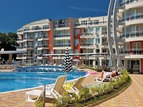

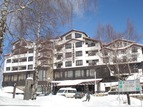


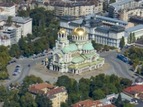
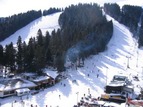
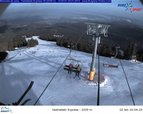
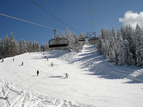


 Touroperator
Touroperator
